I left Horyu-ji Temple and stopped by Chugu-ji Temple before heading to Hōrin-ji Temple. This was the third temple of the day on my temple tour.
It takes about 14 minutes to walk from Chugu-ji to Hōrin-ji. Having already spent a good amount of time walking around Horyu-ji, I was starting to feel a bit tired. However, the peaceful path I was walking on gave me a sense of calm, and I didn’t mind it too much. There’s something special about soaking in the atmosphere of Nara for the first time while making my way through these tranquil streets.
Before long, I arrived at Hōrin-ji Temple.
About Hōrin-ji Temple
The founding of Hōrin-ji Temple dates back to the Asuka period. It is said to have been established by Prince Yamashiro-no-ōe, the son of Prince Shotoku, in hopes of curing his father’s illness.
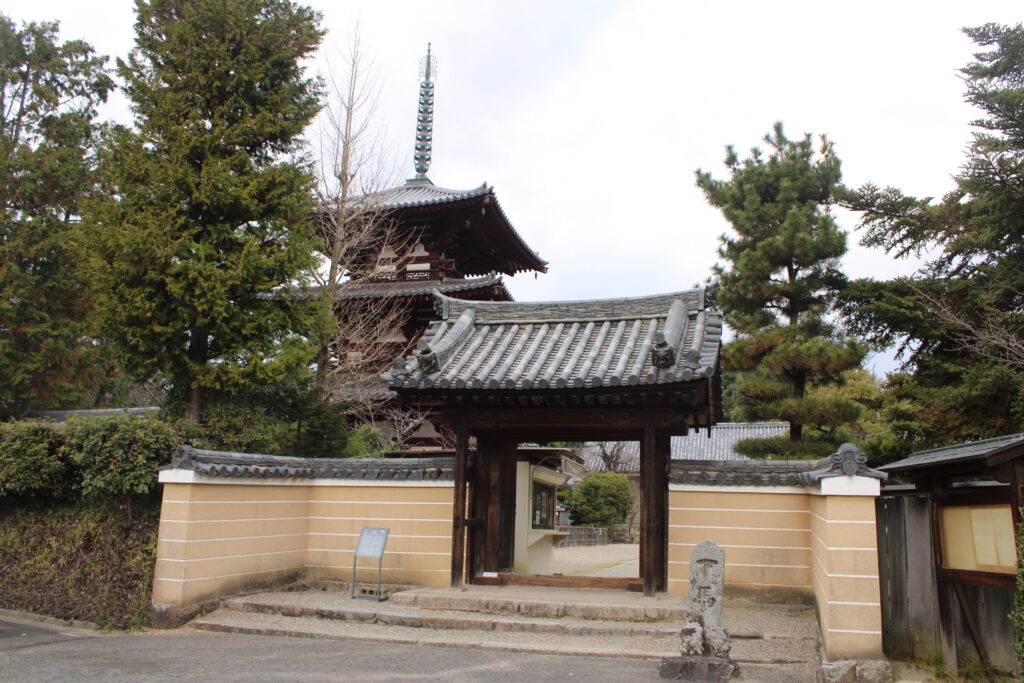
The temple grounds are designed in the Horyu-ji style, with a three-story pagoda and a main hall standing side by side. It is said that at the time of its founding, the temple was about two-thirds the size of the western precinct of Horyu-ji.
Additionally, because the temple houses many Heian-period Buddhist statues, it is believed that the temple was quite influential during the Heian period. However, by the early Edo period, the temple had declined to the point where only the three-story pagoda remained on the grounds. Since then, efforts have been made to restore the temple, and it continues to stand today.
Since we’re here, let me briefly explain about Prince Yamashiro-no-ōe, who is said to have founded this temple.
He was born to Prince Shotoku and Princess Tōjiko, the daughter of Soga no Umako. After the deaths of Prince Shotoku and Empress Suiko, Prince Yamashiro-no-ōe, a powerful royal figure, became embroiled in the political struggles over the imperial succession. In 643, he was attacked by soldiers sent by Soga no Iruka, who burned down his palace, forcing him to flee to Mount Ikoma.

Prince Yamashiro-no-ōe, when advised by his retainers to fight for a comeback, is said to have responded, “I do not wish to exhaust the people for my own sake. If sacrificing myself can strengthen the country, then that is the true meaning of a Masurao.” And it is said that he committed suicide with his family at Ikaruga Temple.
By the way, the term “Masurao” refers to a courageous and strong individual. Indeed, it was a difficult decision to make. In terms of avoiding a cycle of revenge and minimizing further harm, it could be seen as a wise and decisive choice.
Exploring the Temple Grounds
Upon entering the temple grounds, the first things that catch your eye are the three-story pagoda and the main hall.
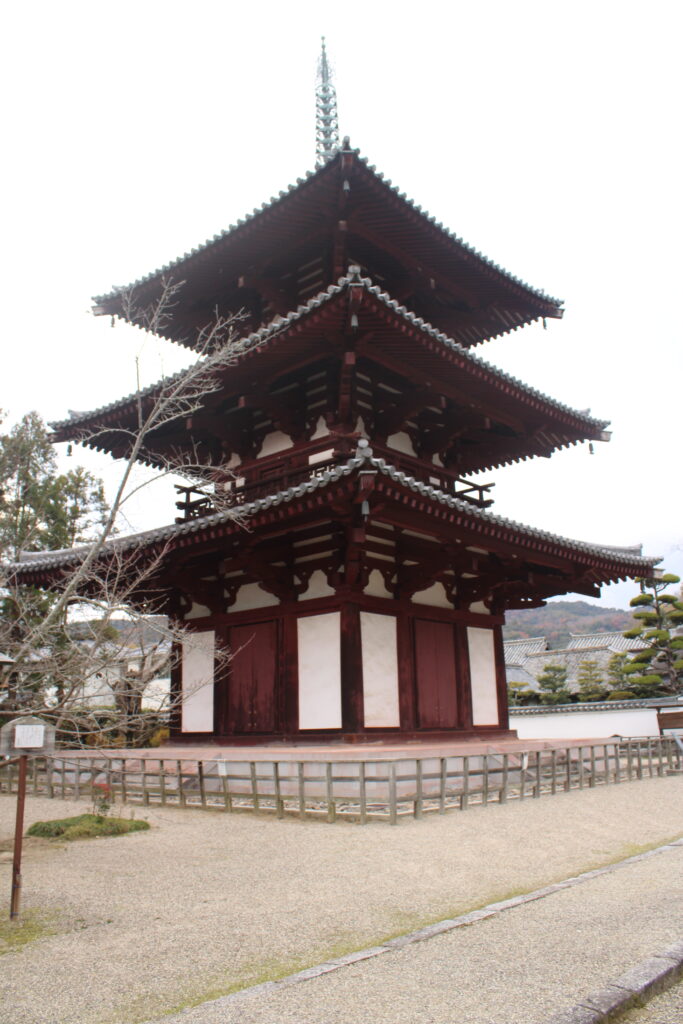
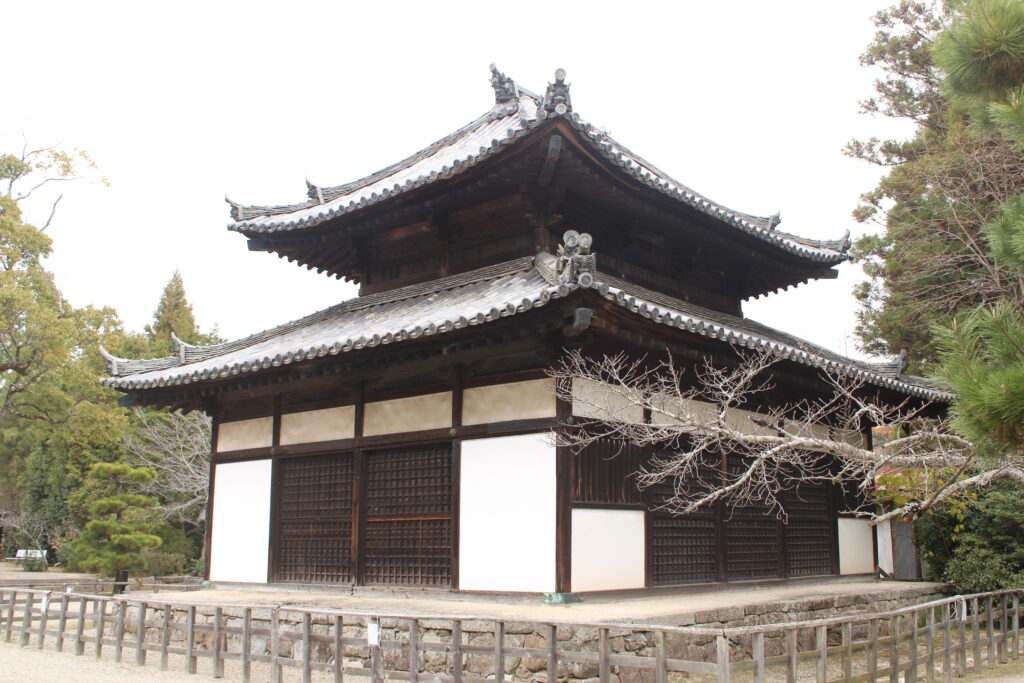
The three-story pagoda here was once beloved as one of the “Three Pagodas of Ikaruga.” It had been designated as a National Treasure, but unfortunately, it was struck by lightning and burned down in 1944. Despite attempts to rebuild it, the complete destruction led to the removal of its National Treasure status. It seems that tall pagodas are particularly vulnerable to lightning strikes… it must have been a great loss for those connected to Hōrin-ji Temple.
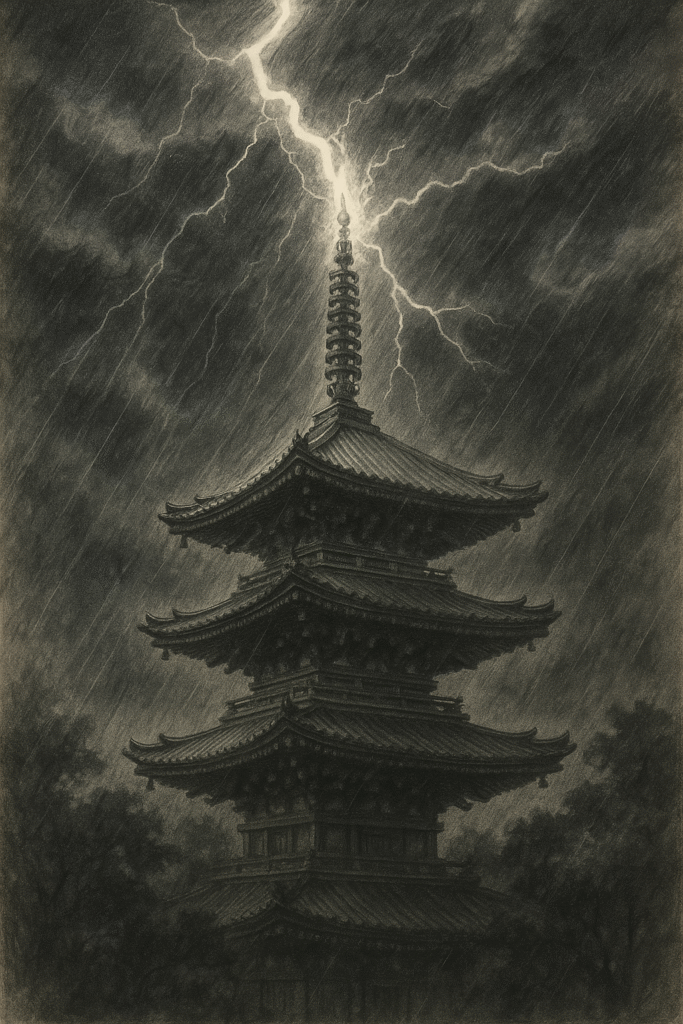
As you pass between the three-story pagoda and the main hall, you’ll find the lecture hall (Kōdō) directly ahead. Inside, there are important cultural properties, including Buddhist statues, which are enshrined there.
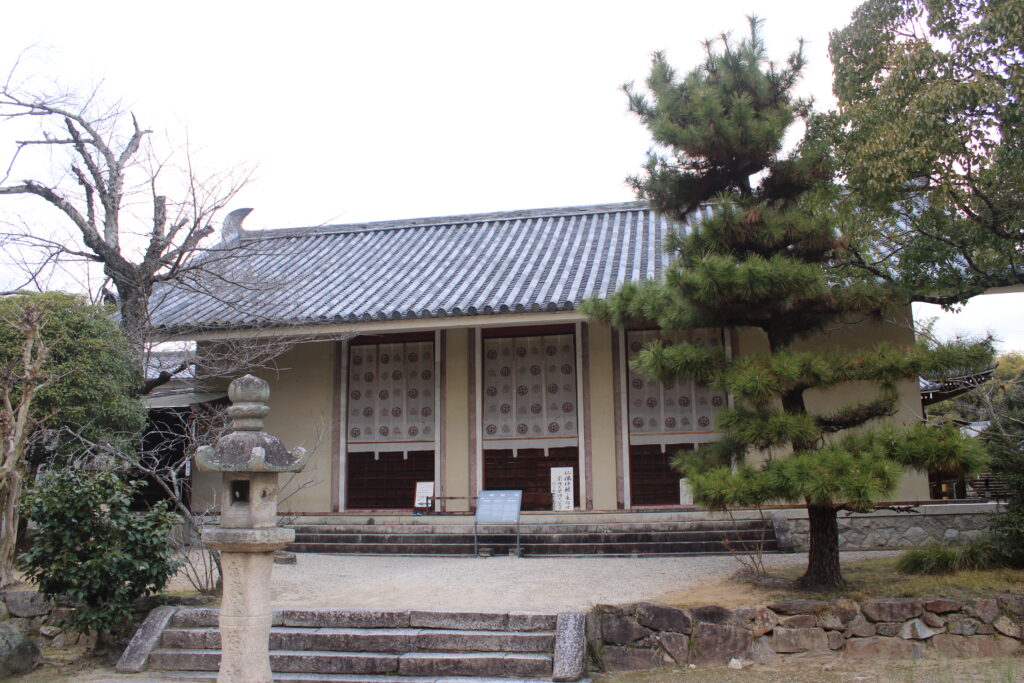
One must not miss the seated statue of Yakushi Nyorai (Important Cultural Property, Asuka period), which is said to have been created by the renowned sculptor Kuratsukuri no Tori. With its long face and the linear, flat body typical of the Tori style, it’s clear that this piece follows the distinctive characteristics of his work. It’s a rare opportunity to see a piece by Tori up close, making it a truly valuable experience.
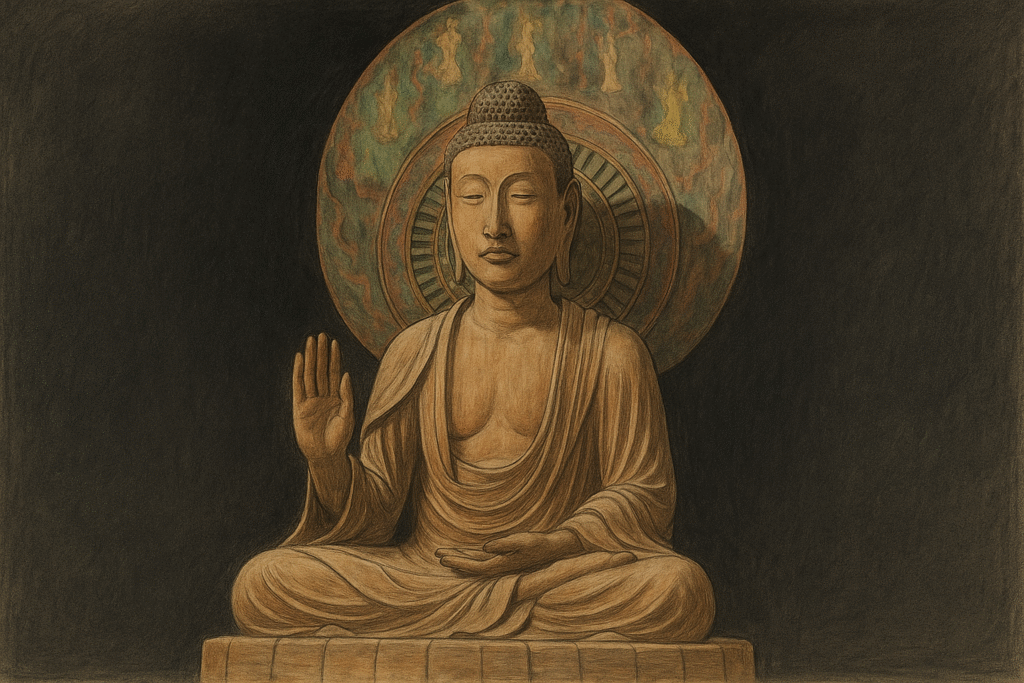
Additionally, there are many other historically and culturally significant statues, such as the standing statue of Kokūzō Bosatsu (Asuka period) and the standing statue of Eleven-faced Kannon (Heian period). It’s fascinating to compare the different facial features and styles across the different periods!
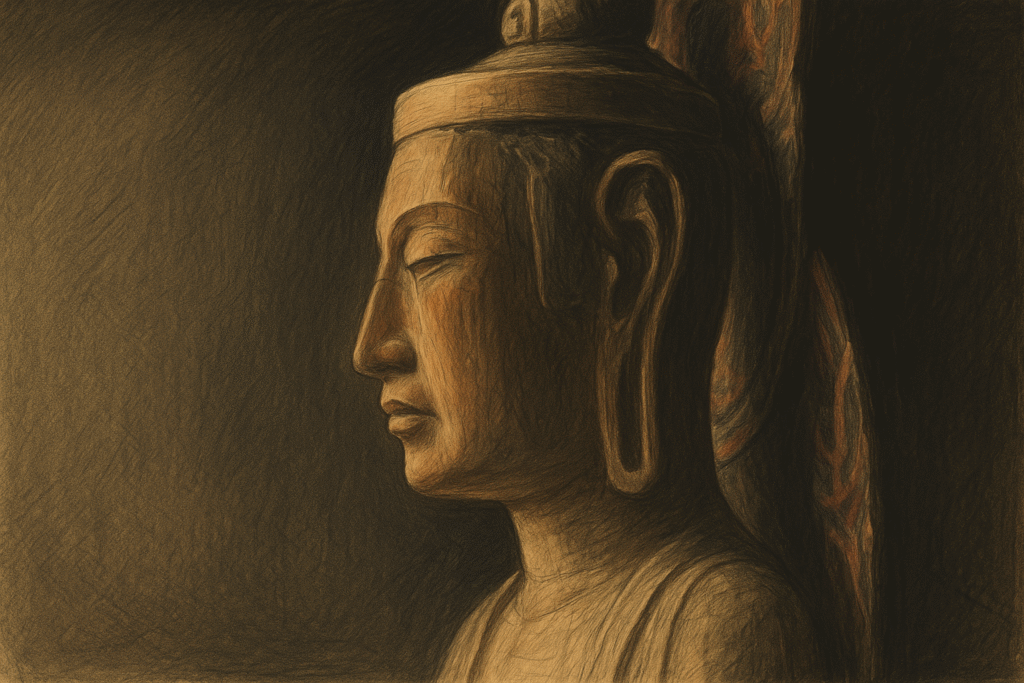
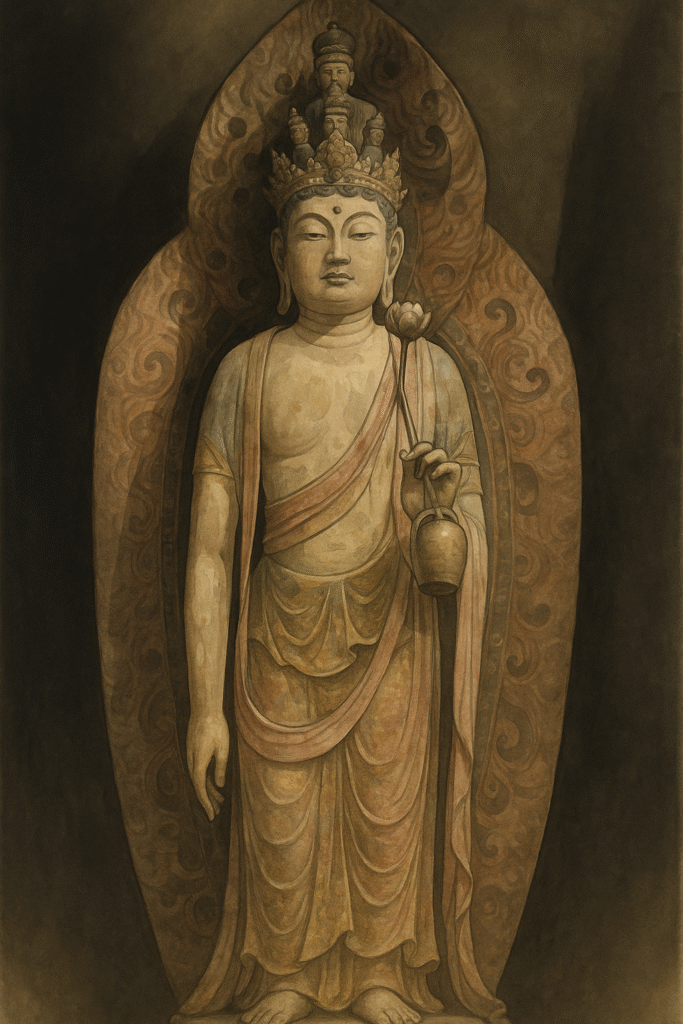
Photography is not allowed, so for those interested, I recommend visiting Hōrin-ji’s official website for more information.
HORINJI
Conclusion
Hōrin-ji Temple is also closely connected to Prince Shōtoku. Through learning about the life of his son, Prince Yamashiro-no-ōe, I’ve gained deeper insight into the Asuka period in which they lived, and I now feel compelled to learn more about that fascinating era.
Moved by the Buddhist statues created by Tori, my emotions were stirred, and with that, I decided to begin walking toward the final temple of the day, Hōkiji. What discoveries will I make next?
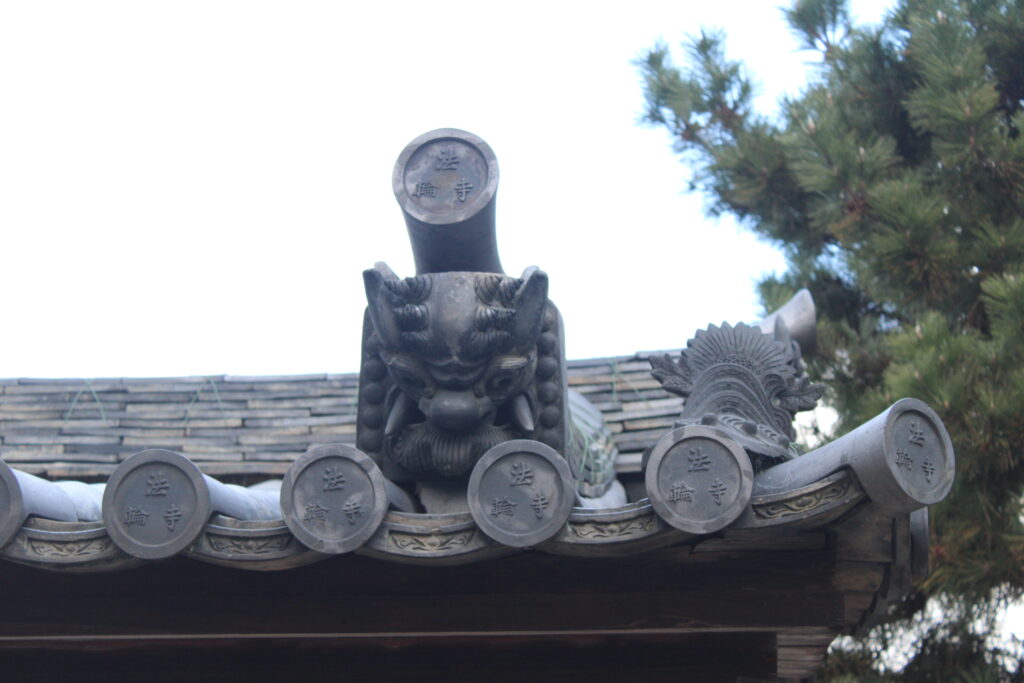
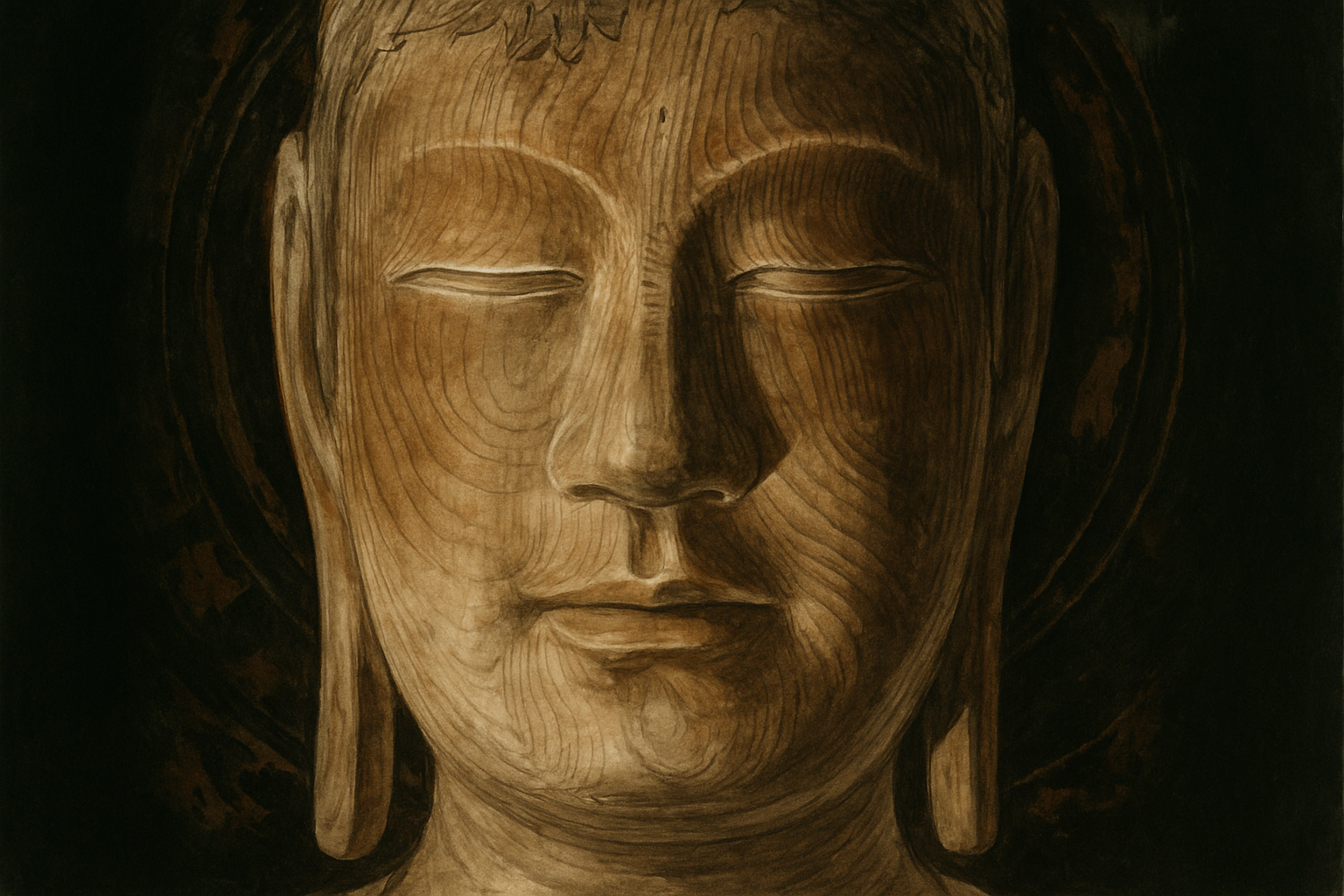


コメント